
Search Wild Foods Home Garden & Nature's Restaurant Websites:
Mints
Peppermint with flowers. (Sten Porse CC BY-SA 3.0))
(NOTE: If you are not interested in growing Mint, but just finding the plant and using it, try going to the Nature's Restaurant Online site Mint page.)
There are a few Mints you can find in the wild you might like to have growing at home. In rural areas away from settlements, the most common would be the American Wild Mint. In cities where there are gardens, or have been, you might find Peppermint and Spearmint. If you live in the Southern Parts of the Eastern side of USA, the Corsican Mint is fairly common. You can also often get Mint plants from friends or neighbors and nurseries and even hardware stores in the spring when flowers are being sold.
Is the growing of this plant compatible with Natural farming, Ecoagriculture or Eco friendly agriculture, Ecological farming, Sustainable agriculture, Agroforestry or Agro-sylviculture and Permaculture: The ideal way of growing this plant is using the Natural farming, no-till garden method. There is never any need to till the soil where they grow once you have them started.
Transplanting: Though there are many Mints you can start from seed (click here for seed sources), many must be transplanted because they are hybrids that are sterile and either don't produce seed, or produce seed that will not sprout. Mints are one of the easiest plants to transplant. Just dig up a shovel full of them, and plant where you want them, and water until established.
Soil & Site: Mints like neutral to slightly alkaline soils that are moist but well drained, soft and loamy. However, they can grow in a wide variety of conditions, just not do as well. If you live in an area where the soil is naturally acidic, just mix lime in with the soil before you transplant them, and sprinkle some on the soil in late fall or early spring each year to keep the soil from reverting back to being acidic.
The American Mint likes full sun to partial shade. The Peppermint likes shade, but will grow in part sun / part shade. The Spearmint will grow in any light condition but the darkest shade. Corsican mint does best in partial shade. As you can see, these plants are not too picky, and will survive all but extreme conditions.
Container Growing: Mints lend themselves to container gardening, and in some cases this is a good idea as they can spread aggressively. Standard neutral pH potting soil is perfect. Keep the soil moist. If you don't, you will know, as they will start to droop over. Container grown mints should be kept out of the full sun on hot summer days, and the best conditions for them would be where they get morning sun, then shade before the heat of the day. If you have a location where you want to grow them in a container and only have shade, you best bets are the Peppermint and Spearmint.
Maintenance: A little fertilizer will help, but the best thing you can do for them is to spread a little pH neutral compost or composted manure on the ground where they grow in the late fall or early spring before they have come up. Neutral compost is fairly simple to make. Take some compost from your compost pile, mix in some lime, and mix around. The reason you need some lime in it, is most compost is slightly acidic. After putting down the composted manure or compost, put some mulch over it. There really isn't much to do - and even then you can skip a year. They have a tendency to spread, but borders of some kind, or mowing around them regularly keeps them in check.
Harvesting: Just pick the upper leaves and use, or dry and keep in jars. With the Spearmint, do all the harvesting before it flowers, as after that the flavor is not as good.
Using: Mint leaves can be made into teas, added to meals, are used in the Warak Arish recipe listed on the River Bank Grape page, or just used for munching on. Good for eating to give better breath, and nice to eat after a meal. A few leaves on salad is good.
Mice and rats do not like Mints, so if you have an area where you have a mouse problem, such as a garden shed or in the garden itself, these are good plants to having growing around. When I lived in a log cabin in Central Ontario I had a bad mouse problem - even with cats around. I planted different Mint plants all around the foundation, and after a couple of years of the mint spreading, never saw a mouse again. Use Peppermint or Spearmint on the north side, or shaded areas, as they grow well in shade.
Description of Mints commonly found in the wild, growing where there has been settlement at one time or in city gardens:
American Wild Mint (Mentha canadensis or Mentha arvensis var. canadensis). Known also as Field Mint. You can often smell this plant even before you see it. This one is good for teas, iced tea, mint jellies, eating fresh, drying and using leaves for teas. Good for stomach upsets and bad breath. The easiest way to recognize this one is the tight groups of flowers in wholes around the stem just above the leaf axils (where the leaf stem meets the four sided plant stem). The color of the flowers ranges from white-mauve to purple to purple-blue.
- USDA Plant Hardiness Zone: 4-8 (More information on hardiness zones).
- Soil pH: 5-7 (best: 6.1-6.5)
- Plant Size: Upright plant that ranges from 10-46 cm (4 to 18 inches) tall
- Duration: Perennial
- Leaf Shape: Lanceolate to Ovate
- Leaf Phyllotaxis (Arrangement) on branch: Decussate (Alternating Opposites. That is, they come in Opposite pairs that Alternate on the stem - if looking at the plant from above, you will have one pair at three and nine o'clock, then the next pair at twelve and six o'clock.)
- Leaf Size: 2.5-6.35 cm (1 to 2 1/2 inches) long by 1.25-2.5 cm (1/2 to 1 inch) wide
- Leaf Margin: Serrated (saw toothed edge)
- Leaf Notes: Leaves are hairy.
- Flowers: From whorls over axils of upper leaves. Tube shaped with an upper petal that is divided into 2 lobes and a lower lip. The lower petal can be divided into 3 lobes. White-mauve to purple to blue-purple.
- Stem: 4 sided
- Habitat: Low lying area where the soil is rich and moist but not right in water. Full sun to part shade. This plant spreads by the rhizomes, and can form large colonies.
Web Resources:
- Recipe search on the web here (Google search) and here (Bing search).
- Pictures on the web here (Google images) and here (Bing images).
- Interactive USDA distribution map and plant profile here.
- The Biota of North America Program (BONAP) distribution map here. BONAP map color key here.
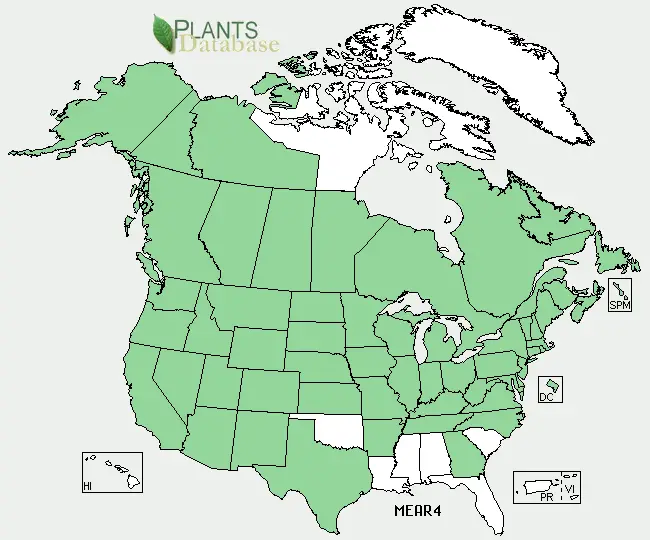
American Wild Mint (Mentha canadensis) range. Distribution map courtesy of U. S. Department of Agriculture (USDA Natural Resources Service) and used in accordance with their policies.
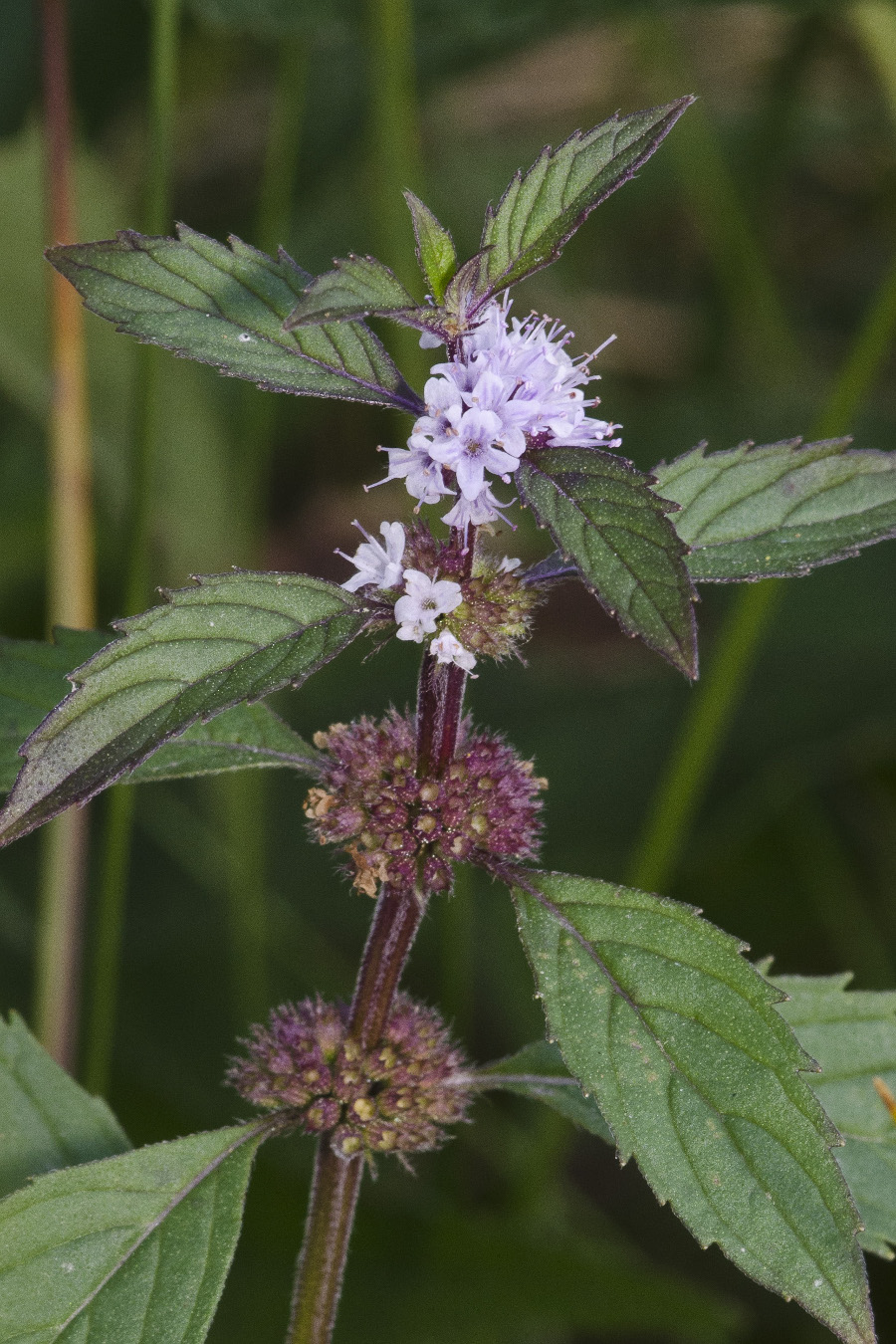
American Wild Mint (Mentha canadensis or Mentha arvensis var. canadensis). Known also as Field Mint. (By: Mjhuft. Attribution-Share Alike 4.0 International)
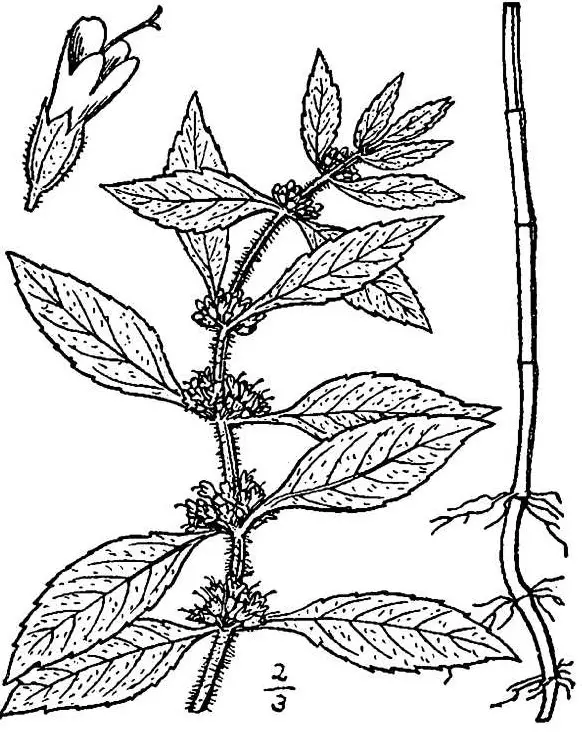
Drawing. (USDA-NRCS PLANTS Database / Britton, N.L., and A. Brown. 1913. An illustrated flora of the northern United States, Canada and the British Possessions. 3 vols. Charles Scribner's Sons, New York. Vol. 3: 152)
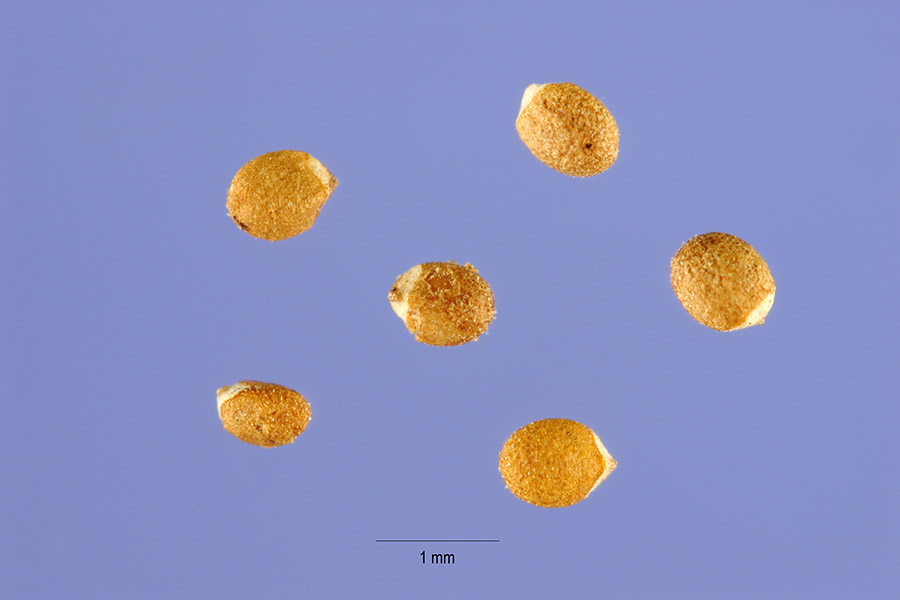
American Wild Mint (Mentha canadensis) seeds. (Steve Hurst, hosted by the USDA-NRCS PLANTS Database)
Peppermint (Mentha × piperita or Mentha balsamea). This very common hybrid is found in most areas of Eastern North America having escaped cultivation. Wherever there has been human settlement, this is sure to be found somewhere. A very tasty mint for tea and eating fresh. The Spearmint has green stems, this one has dark red stems. The Spearmint has long, thin flower clusters, this one has spherical flower clusters. The Spearmint has leaves that are lighter green than this one.
This one could be aggressive where it likes to grow, and is considered invasive in the Great Lakes area. This one is very good for shady areas.
- USDA Plant Hardiness Zone: 3-11 (More information on hardiness zones).
- Soil pH: 6.0-6.5
- Plant Size: Ranges from 30–90 cm (12 to 35 inches) tall
- Duration: Perennial
- Leaf Shape: Ovate to Lanceolate
- Leaf Phyllotaxis (Arrangement) on branch: Decussate (Alternating Opposites. That is, they come in Opposite pairs that Alternate on the stem - if looking at the plant from above, you will have one pair at three and nine o'clock, then the next pair at twelve and six o'clock.)
- Leaf Size: 4–9 cm (1/3 to 3 1/2 inches) long
- Leaf Margin: Serrated (saw toothed edge)
- Leaf Notes: leaf veins have a reddish tint. Leaf color is dark green. Most often there is a very slight fuzz on the leaves.
- Flowers: The flowers are a light-mauve to purple and appear in tight clusters around the stems, most of which are right at the top or termination of the stem.
- Fruit: As this is a hybrid plant, it is sterile and does not produce seeds.
- Stem: 4 sided and dark red
- Habitat: Shaded, moist areas, but can adapt to a huge range of conditions and can spread rapidly by the rhizomes.
Web Resources:
- Recipe search on the web here (Google search) and here (Bing search).
- Pictures on the web here (Google images) and here (Bing images).
- Interactive USDA distribution map and plant profile here.
- The Biota of North America Program (BONAP) distribution map here. BONAP map color key here.
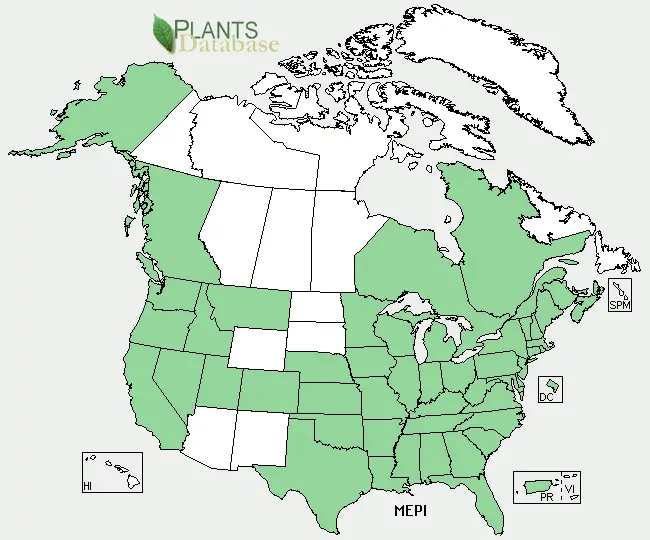
Peppermint (Mentha × piperita or Mentha balsamea) range. Distribution map courtesy of U. S. Department of Agriculture (USDA Natural Resources Service) and used in accordance with their policies.
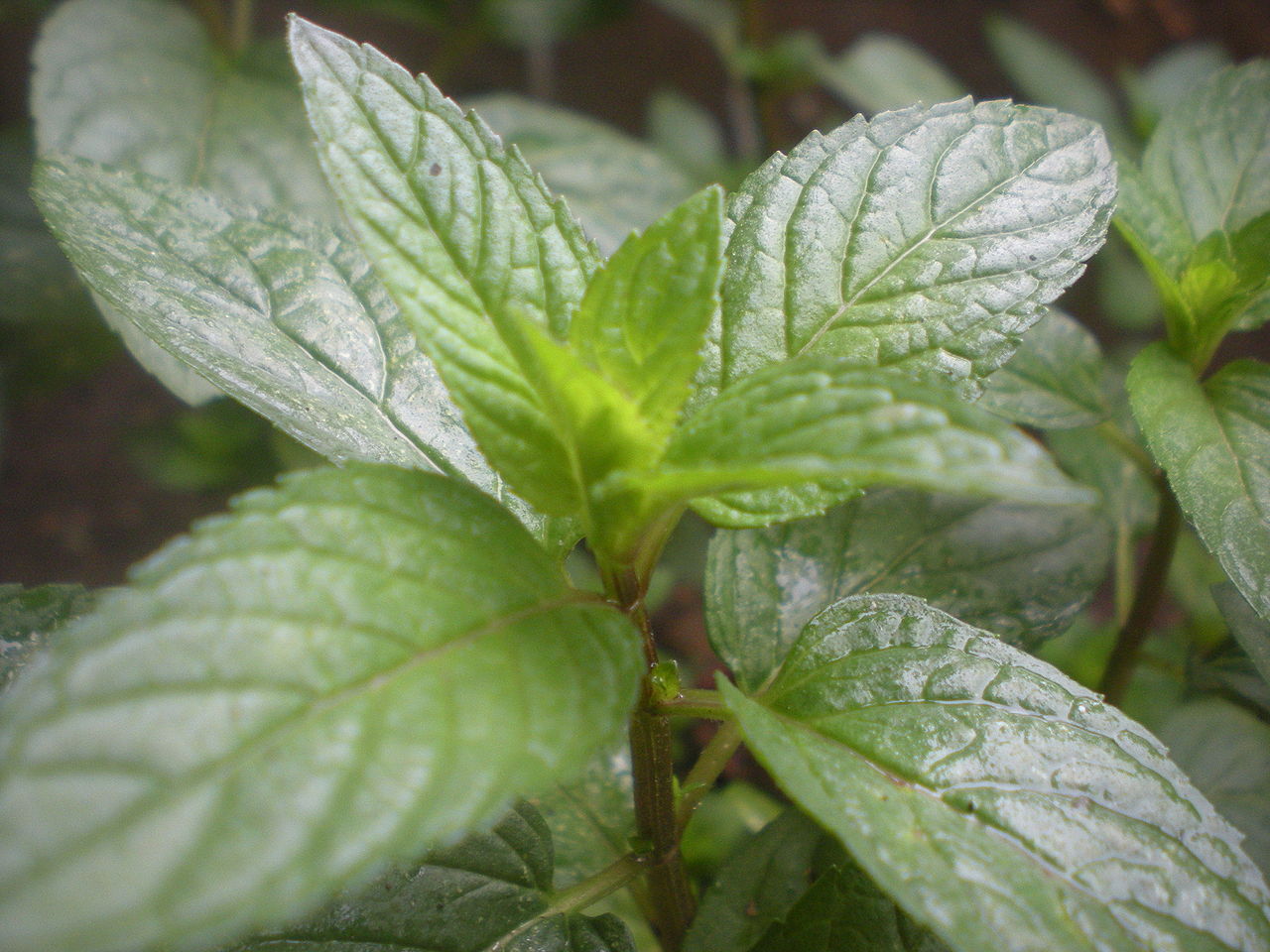
Peppermint leaves up close. Note how they are reddish-green compared to the yellowish-green of the Spearmint. (Aleksa Lukic CC BY-SA 3.0)
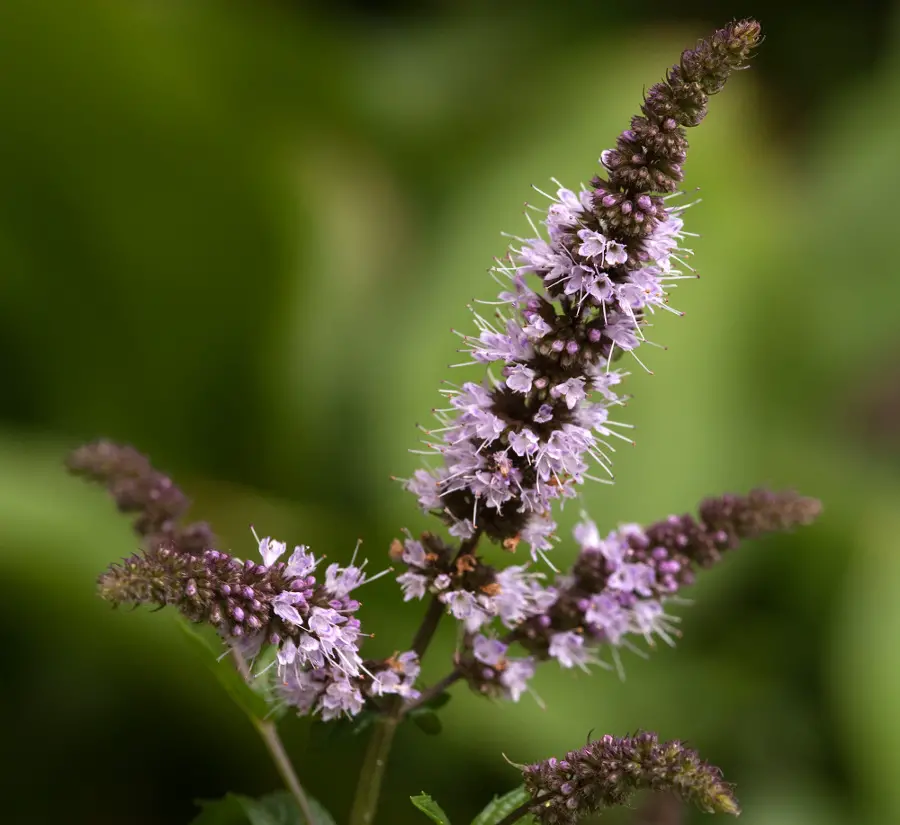
Flowers at top of plant. (By: Dinnye CC BY-SA 3.0)
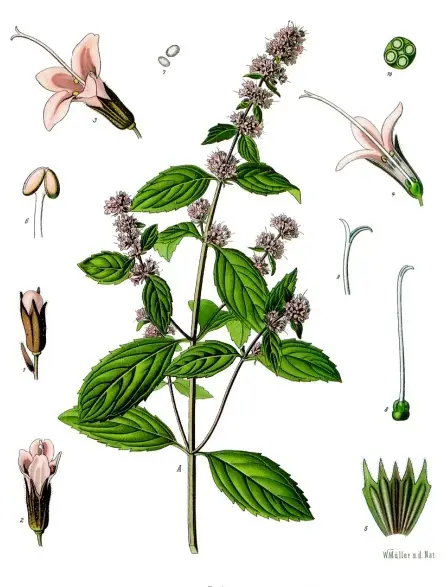
Peppermint color drawing. (By: Franz Eugen Köhler, Köhler's Medizinal-Pflanzen)
Spearmint or Spear Mint (Mentha spicata). A very nice leaf for making teas, eating fresh or adding to baked goods. The taste is cooling and seems to cut thirst. It also is helpful as a tea for stomach upset. This one has thin, long pink to white flower clusters on the top of the stems while the Peppermint has spherical flower clusters. Stems are green with this one, while the stems of the Peppermint are red. Peppermint leaves are darker green than this one.
Use the leaves before the plant flowers - they are not as good after.
- USDA Plant Hardiness Zone: 3-11 (More information on hardiness zones).
- Soil pH: 6.5-7.0
- Plant Size: Ranging from 30–100 cm (1 to 3 feet) tall
- Duration: Perennial
- Leaf Shape: Ovate to Lanceolate. The tips of the leaves are pointed - that is where the "Spear" part of the name comes from.
- Leaf Phyllotaxis (Arrangement) on branch: Decussate (Alternating Opposites. That is, they come in Opposite pairs that Alternate on the stem - if looking at the plant from above, you will have one pair at three and nine o'clock, then the next pair at twelve and six o'clock.)
- Leaf Size: 5–9 cm (2 to 3 1/2 inches) long
- Leaf Margin: Serrated (saw toothed edge)
- Leaf Notes: Leaves can have hairs or not.
- Flowers: Flowers appear in clusters of thin, long spikes at the top of stems. Pink to white.
- Fruit: It is a sterile hybrid, so it does not grow seeds.
- Stems: 4 sided. Can be hairy or not hairy. Stems are green.
- Habitat: Likes wet soils, but can grow in a wide variety of conditions.
Web Resources:
- Recipe search on the web here (Google search) and here (Bing search).
- Pictures on the web here (Google images) and here (Bing images).
- Interactive USDA distribution map and plant profile here.
- The Biota of North America Program (BONAP) distribution map here. BONAP map color key here.
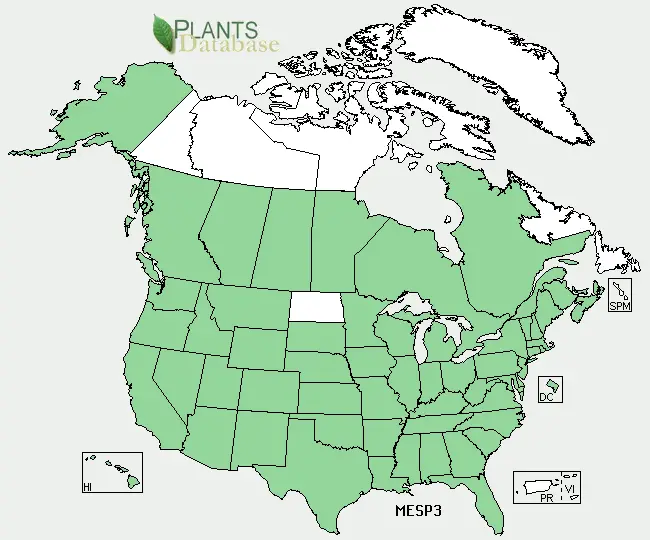
Spearmint or Spear Mint (Mentha spicata) range. Distribution map courtesy of U. S. Department of Agriculture (USDA Natural Resources Service) and used in accordance with their policies.
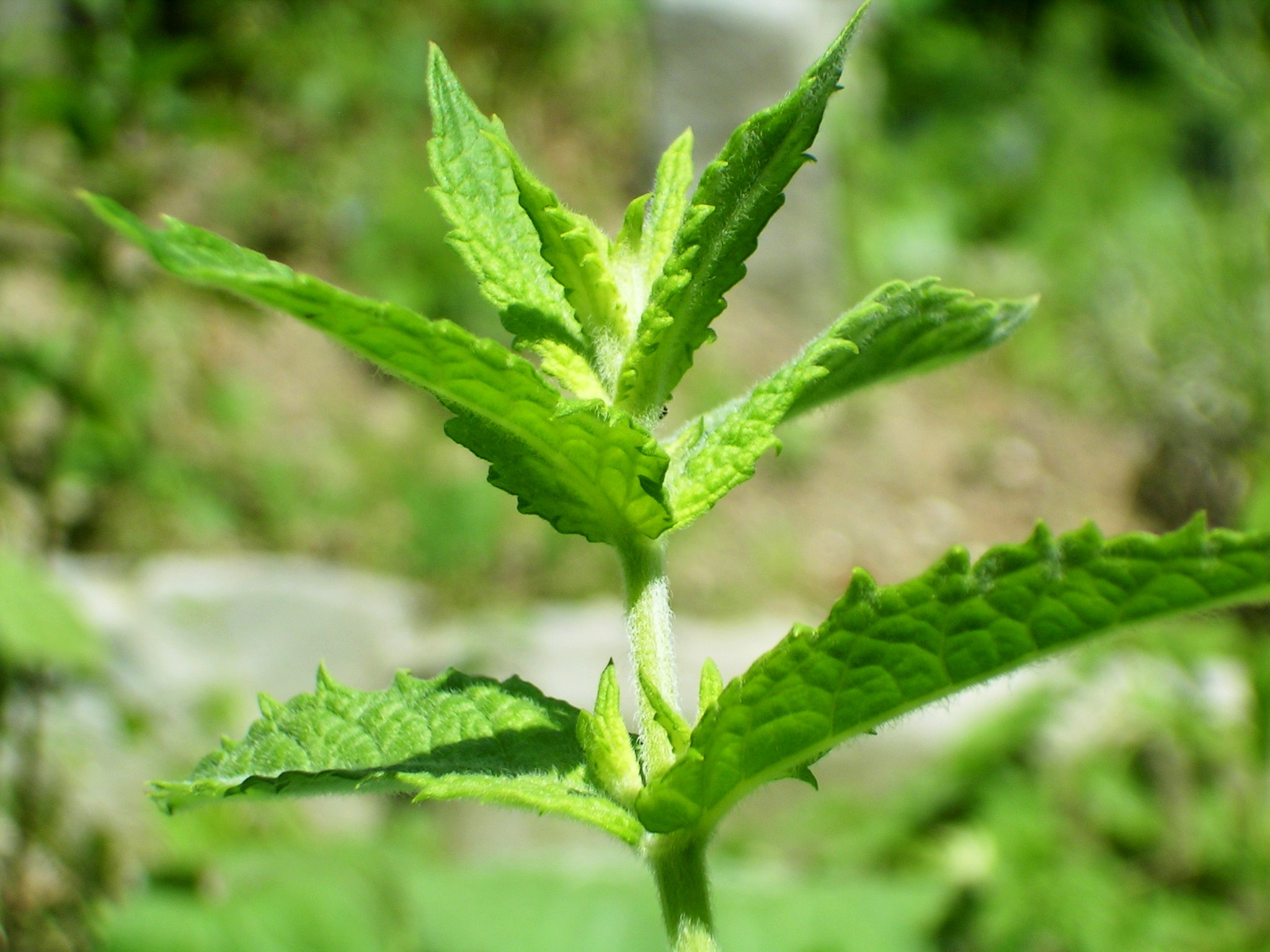
Spearmint. Note the yellowish-green of the leaves compared to the reddish-green of Peppermint leaves. (By: Simon Eugster CC BY-SA 3.0)
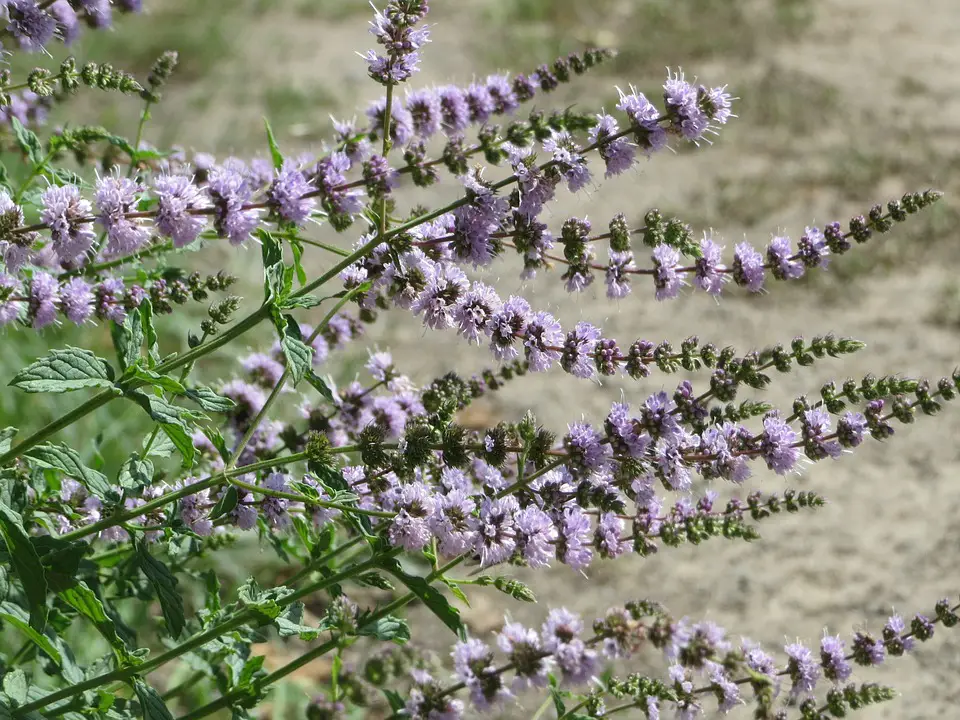
Spearmint flowers. Note how long, thin and spaced apart they are compared to the Peppermint.
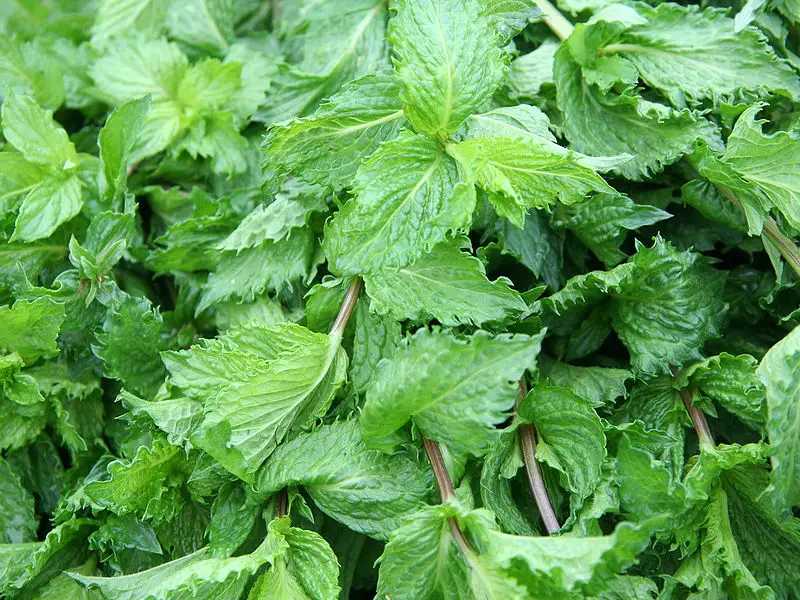
Spearmint for sale at market. Note how green they are compared to Peppermint. (By: Jonathunder CC BY-SA 3.0)
Corsican Mint (Mentha requienii). This is a very low growing mint that does not occur where I live, so I don't have any experience growing it. It is the mint used in Crème de menthe.
Web Resources:
- Recipe search on the web here (Google search) and here (Bing search).
- Pictures on the web here (Google images) and here (Bing images).
- Interactive USDA distribution map and plant profile here.
.jpg)
Corsican Mint. (By: David Eickhoff Attribution 2.0 Generic)
Search Wild Foods Home Garden & Nature's Restaurant Websites:
Share:
Why does this site have ads?
Originally the content in this site was a book that was sold through Amazon worldwide. However, I wanted the information to available to everyone free of charge, so I made this website. The ads on the site help cover the cost of maintaining the site and keeping it available.
Google + profile
